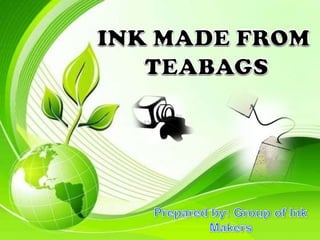This document discusses experiments to create ink from tea bags. Two experimental set-ups are used: Set-up A adds vinegar and cornstarch, while Set-up B only includes tea bags steeped in water. Observations found Set-up A's ink had a darker, more consistent color and thicker consistency when dried. Vinegar is added to improve color stability. The experiments support creating improvised ink from common ingredients like tea bags, showing boiling and straining effectively extract color from tea.



































